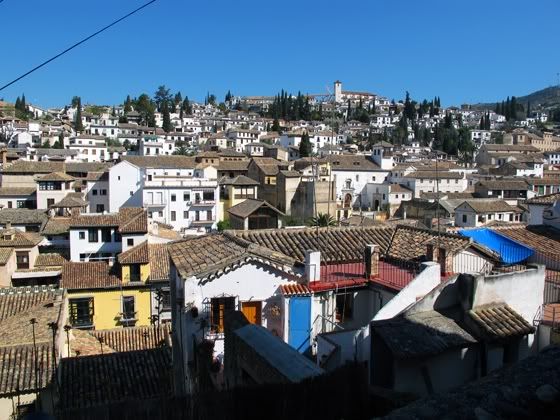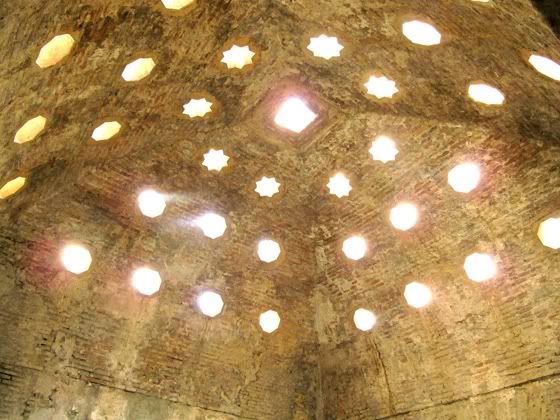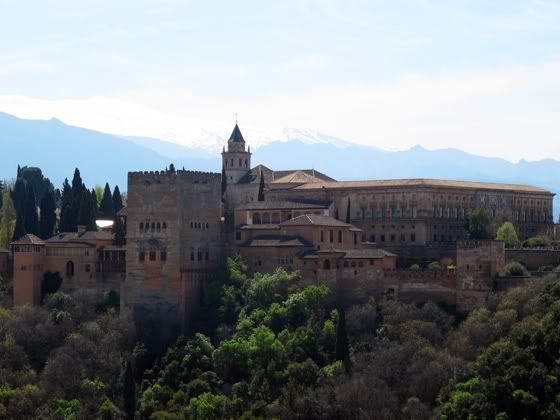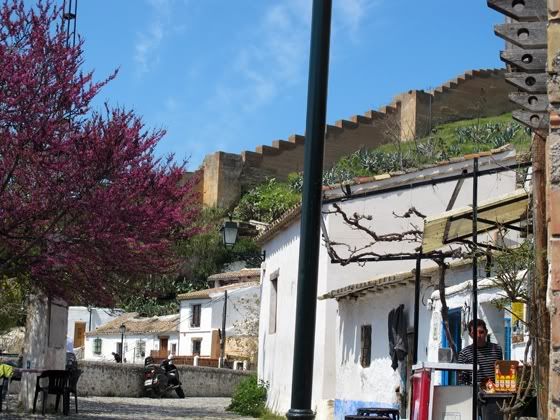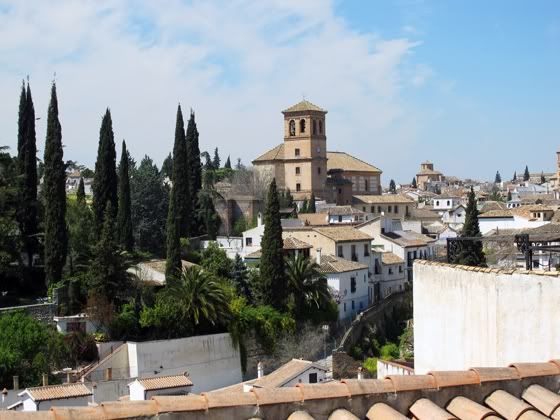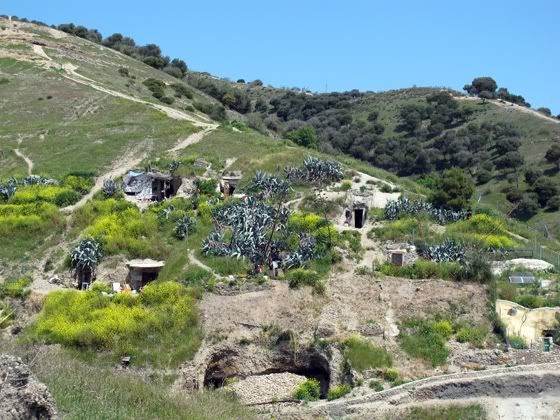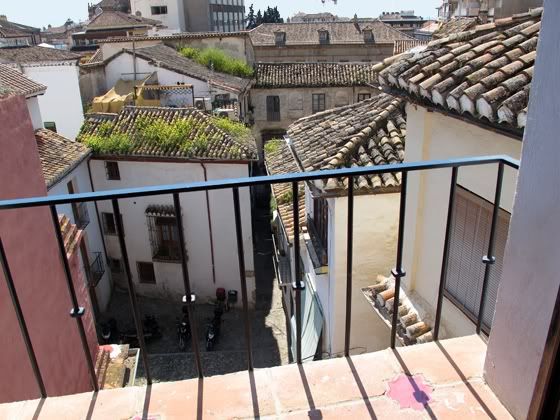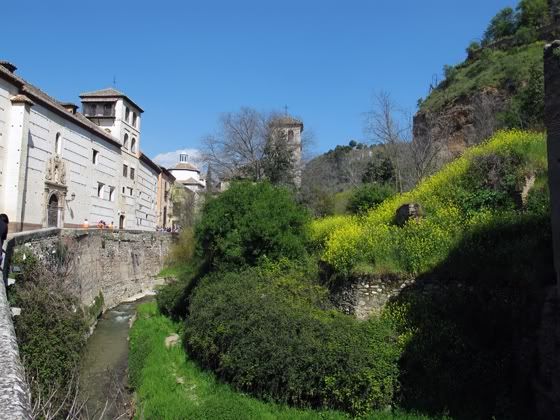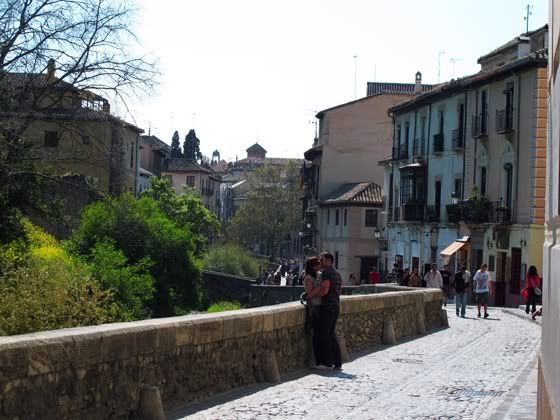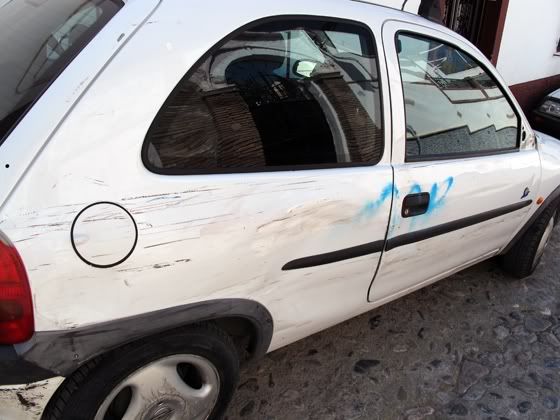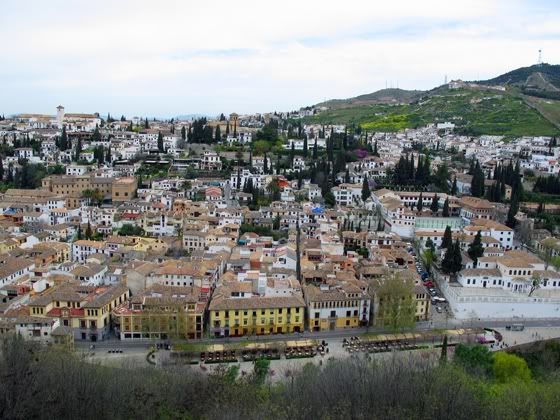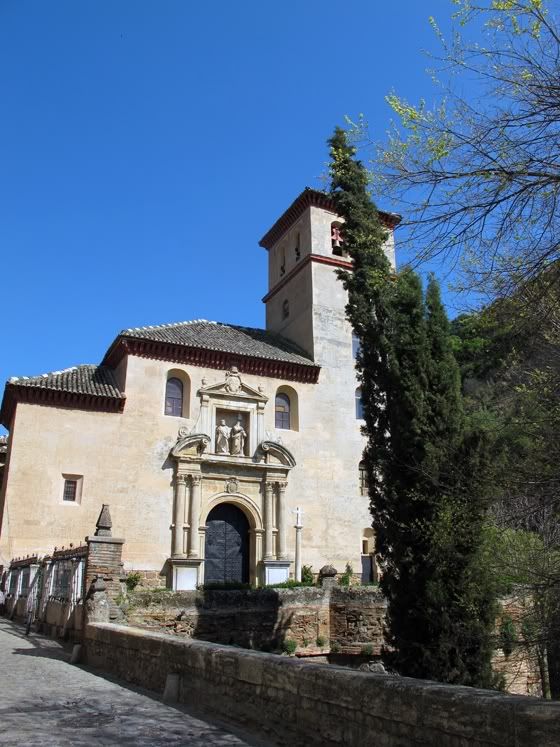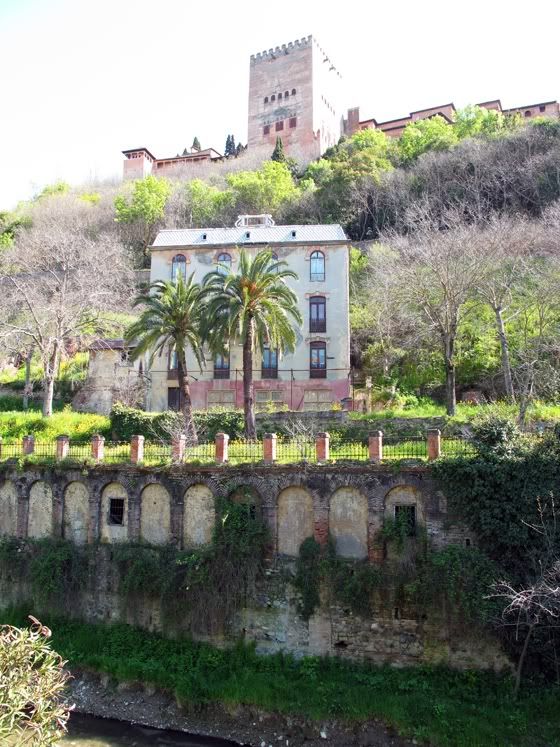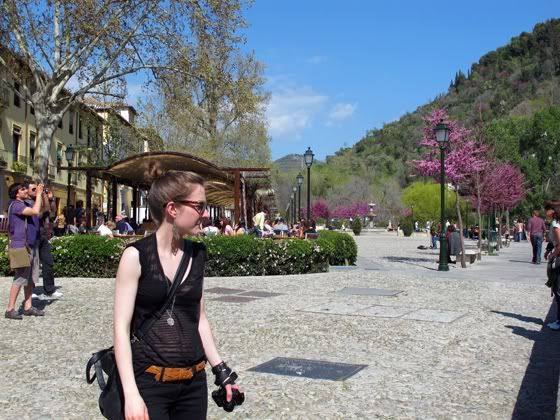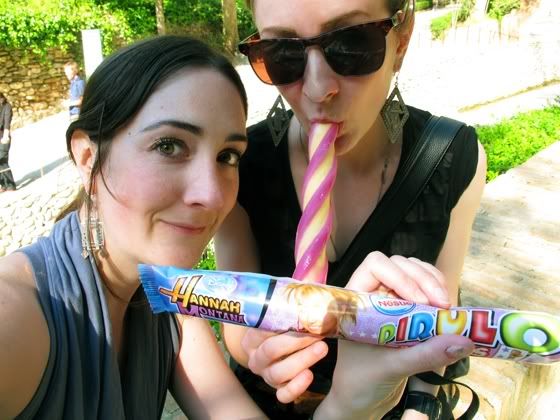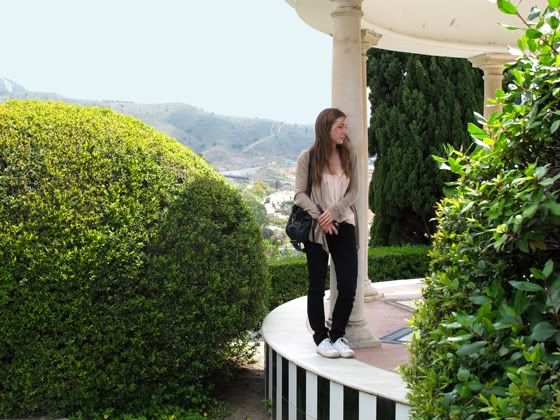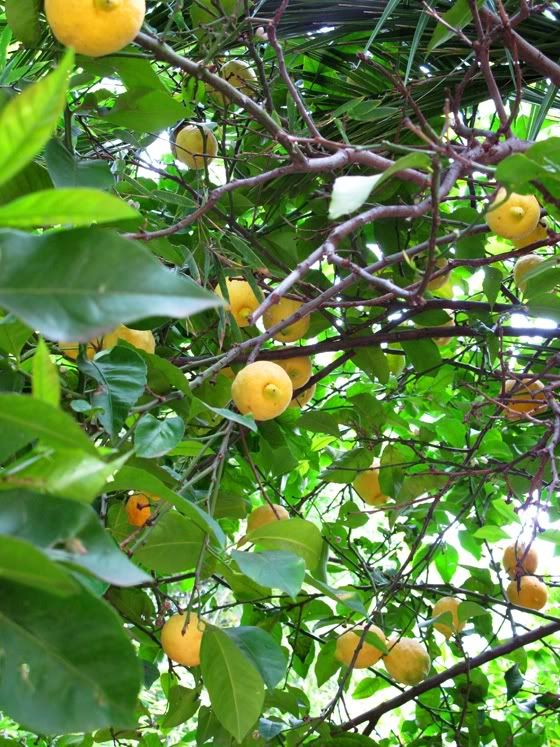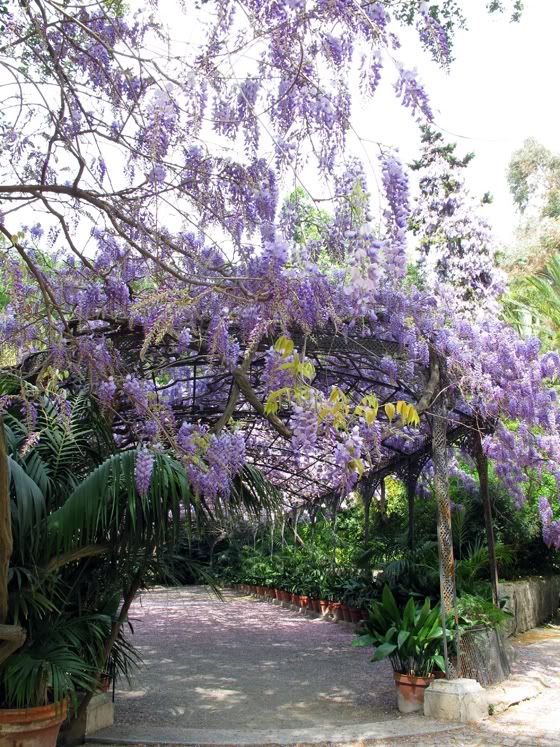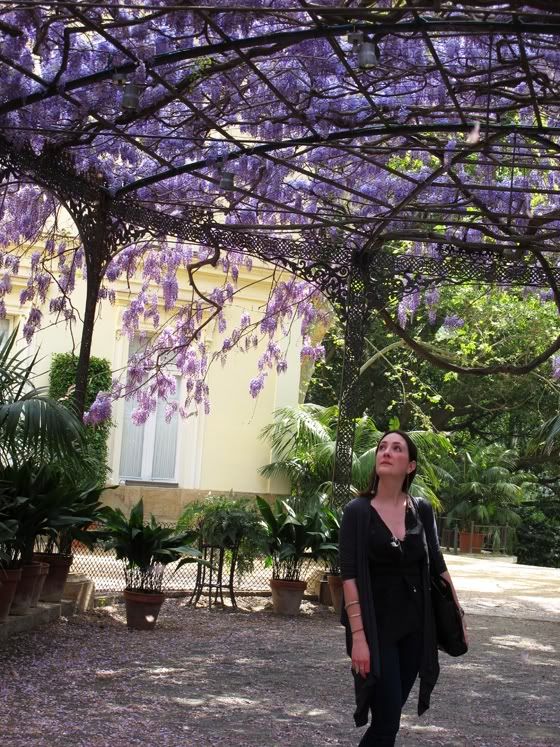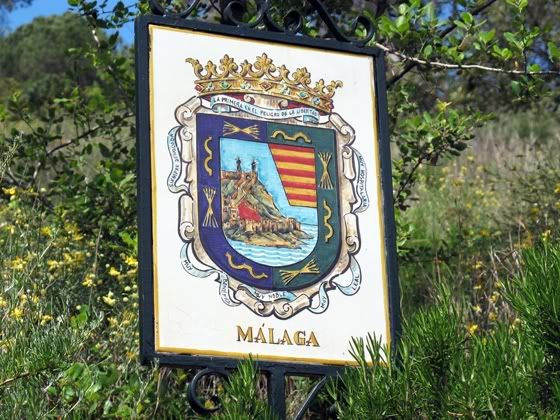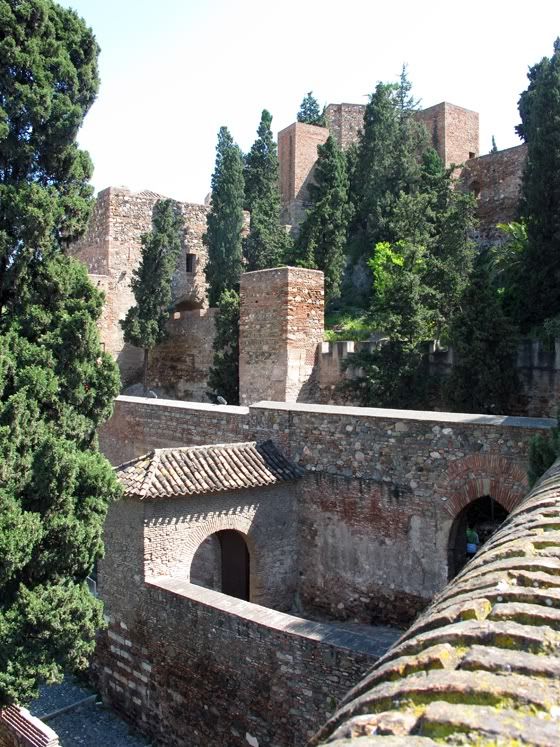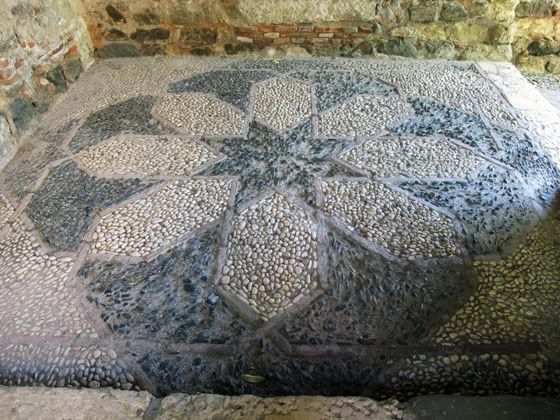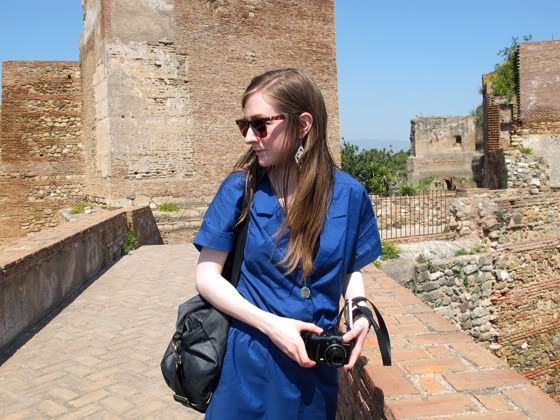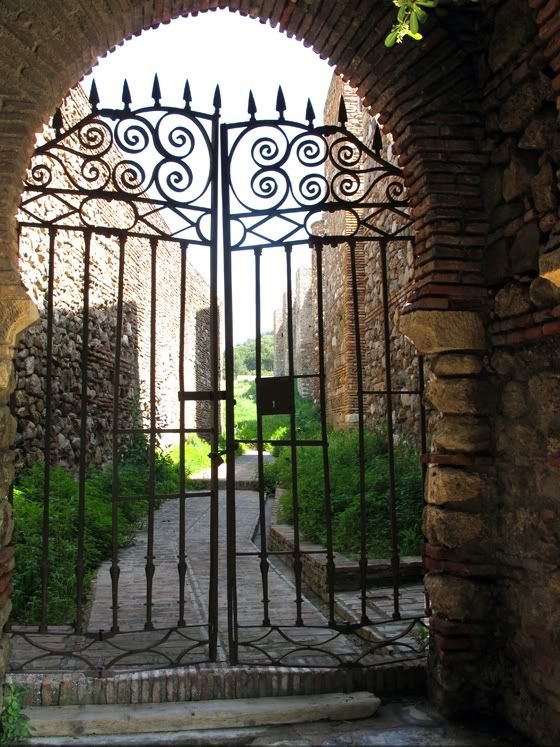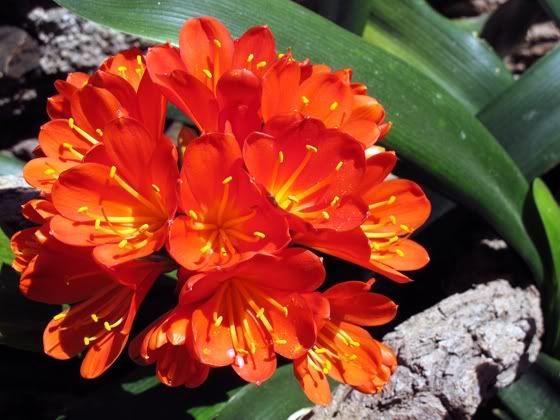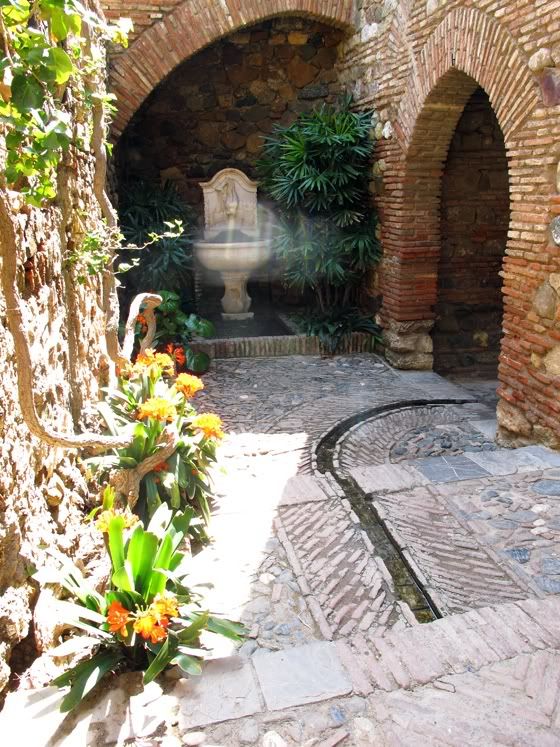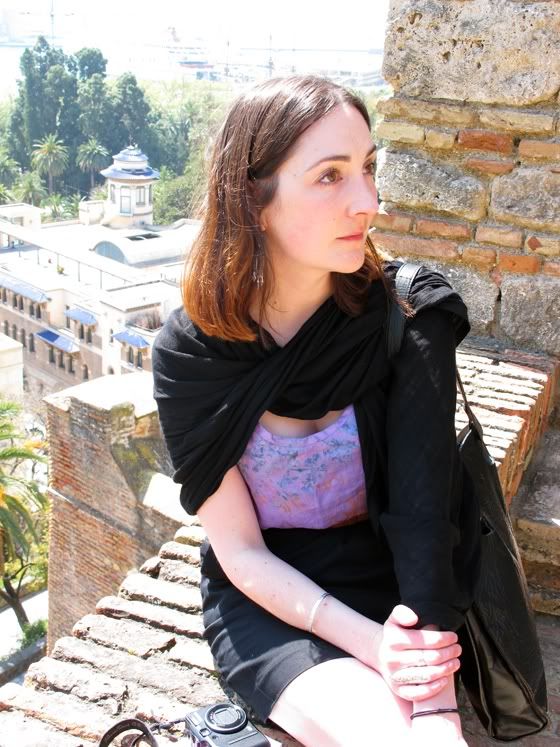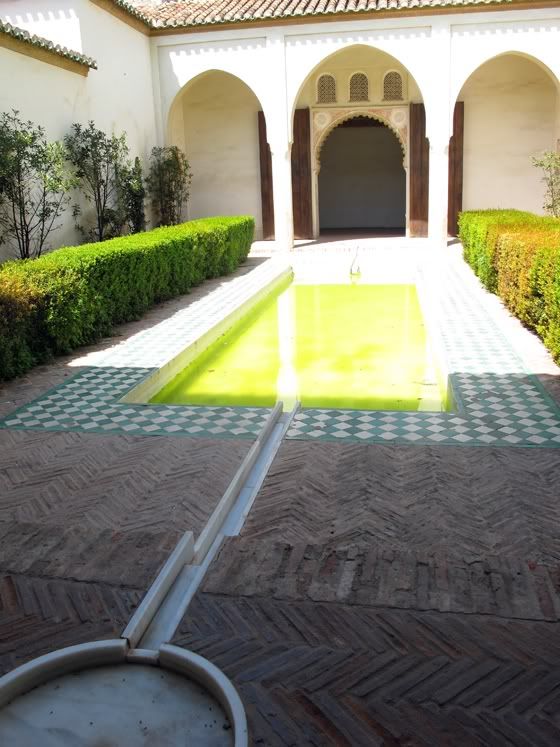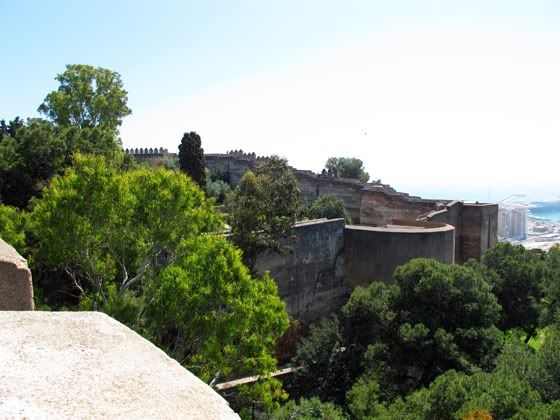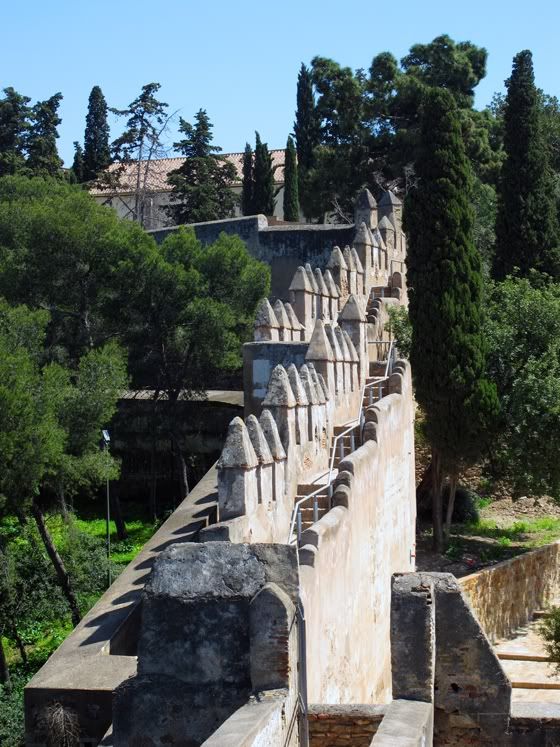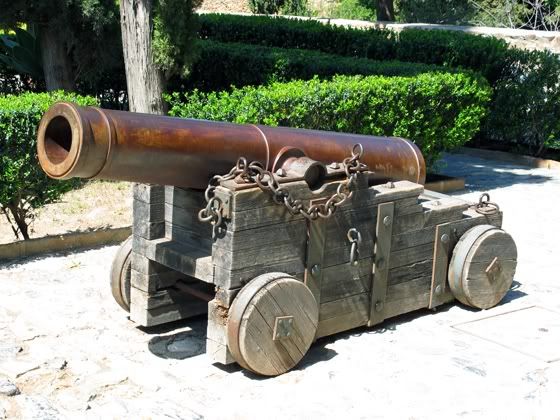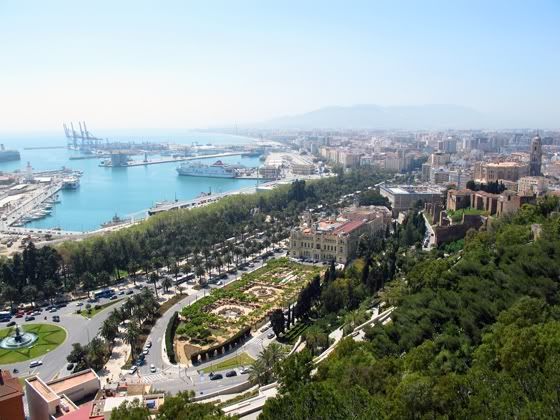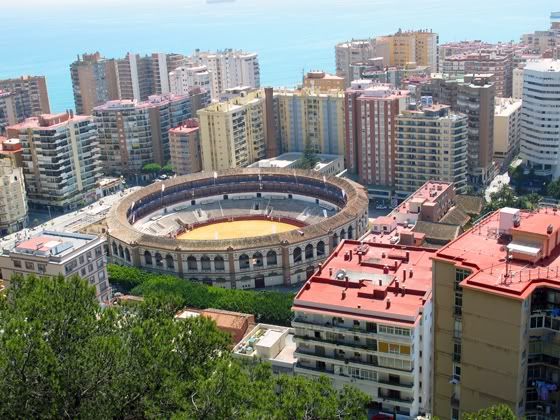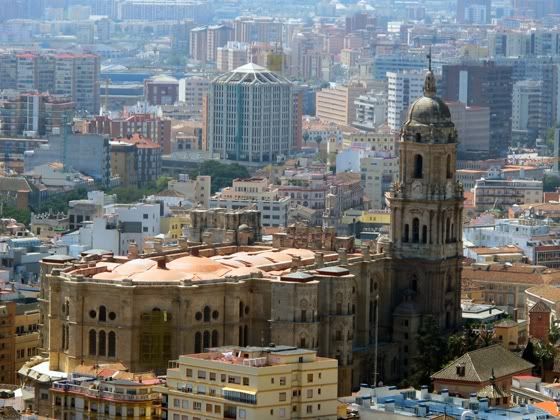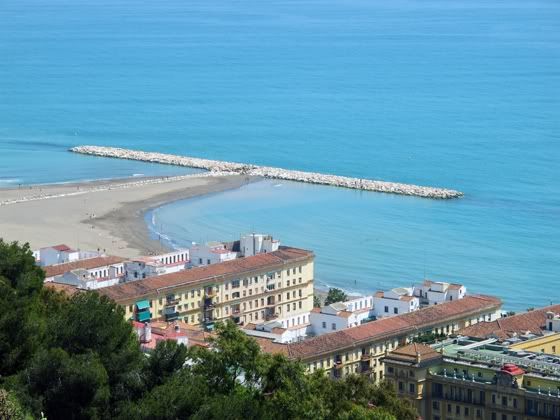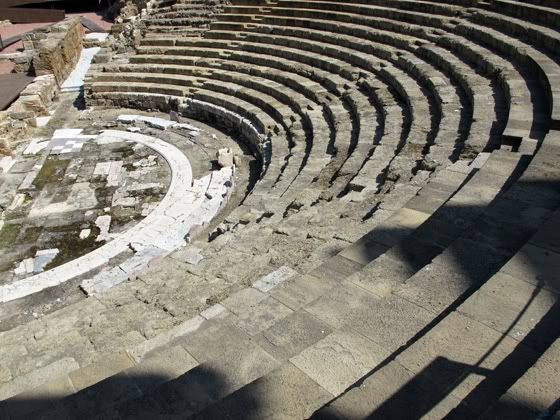Here are a few shots from our walking tour of Granada, above is a view of the Albayzin from the hill leading towards the Alhambra. Those narrow warrens of mystery and history - we learned that a rich 13th century Moorish gentleman could show off his wealth with a walled garden within the city. If he was especially wealthy it would be filled with exotic plants such as bamboo (6 months travel time over the silk roads from China.) If he was very very wealthy he might have a couple blond haired, blue eyed girls brought over from the north. Mary would be in luck. Me, not so much. I'd be old news to the Moors.
Above is a shot of the ceiling in one the oldest buildings in Granada, the Bañuelo or Arab baths dating to the 11th century. Though they seem cold and distant now, it takes little imagination to picture them filled with steam and steamy men as little pinpricks of sunshine shot down through the thick stone to the bathers below.
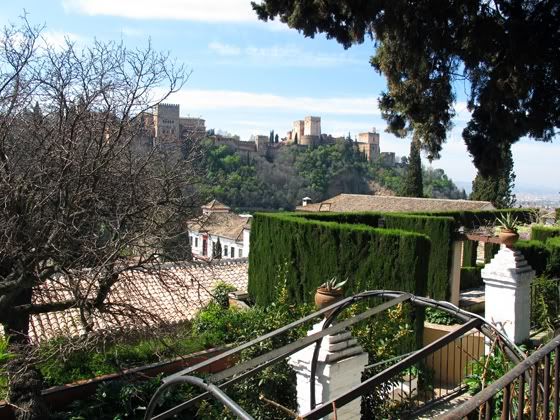
A glimpse of one of the aforementioned walled gardens. Most of these are now protected historic sites which, though private, you can still gain entry to (especially if you're a cute foreign girl.)
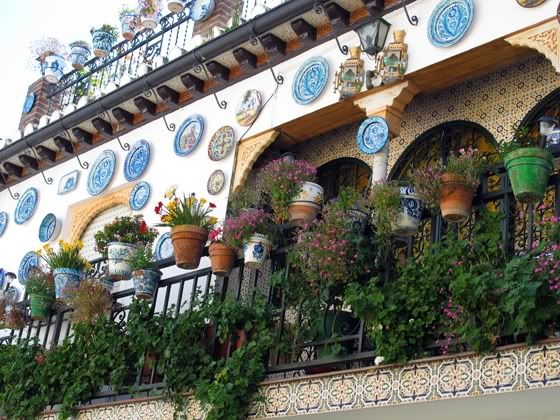
A typical Andalusian home. All greenery and decoration.
The majestic Alhambra. Constructed during the 13th century for the last Muslim Emirs of Spain, the Alhambra was conquered in a bloodless battle by Ferdinand and Isabella. Isabella, who wore the pants in the relationship, loved it and they moved in shortly thereafter (despite Ferdinand's desire to set up shop in Toledo.
Higher up the hill beyond the Albayzin lies Sacromonte, a hotbed of flamenco song and dance, filled with houses built directly into the stone of the hill. I've never been to Mexico but the life, colour, music and magic of Sacromonte lived up to my dreams of what Mexico might be. Immediately things became a little more relaxed, a little louder, a little meaner, a little more flavorful.
Mary and I were lucky enough to attend a flamenco show later that night at La Chumbera, the international flamenco school in Granada. Though we had terrible seats, the low coarse trill of the singer, the quick, sharp stomp and sensual flow of the dance and the insanely intricate strum and pick of the guitar will stay with me a long time. A forbidden lullabye.
Up in the hills above Sacramonte lie the cave dwellings of Granada, barely visable in the photo above. Once populated by various persecuted peoples, the caves are now largely home to hippies and other squatters. We learned that every few years (usually an election year) the caves are cleared out and tenants evicted (inhabitants pay no rent/taxes etc) until the occupants (who, technically, are living there legally) descend upon the mayor's front lawn, dogs and all, until they're allowed back into their homes.
We followed this little hidden path to get a closer look....
....And found hippies....
....And homes....

